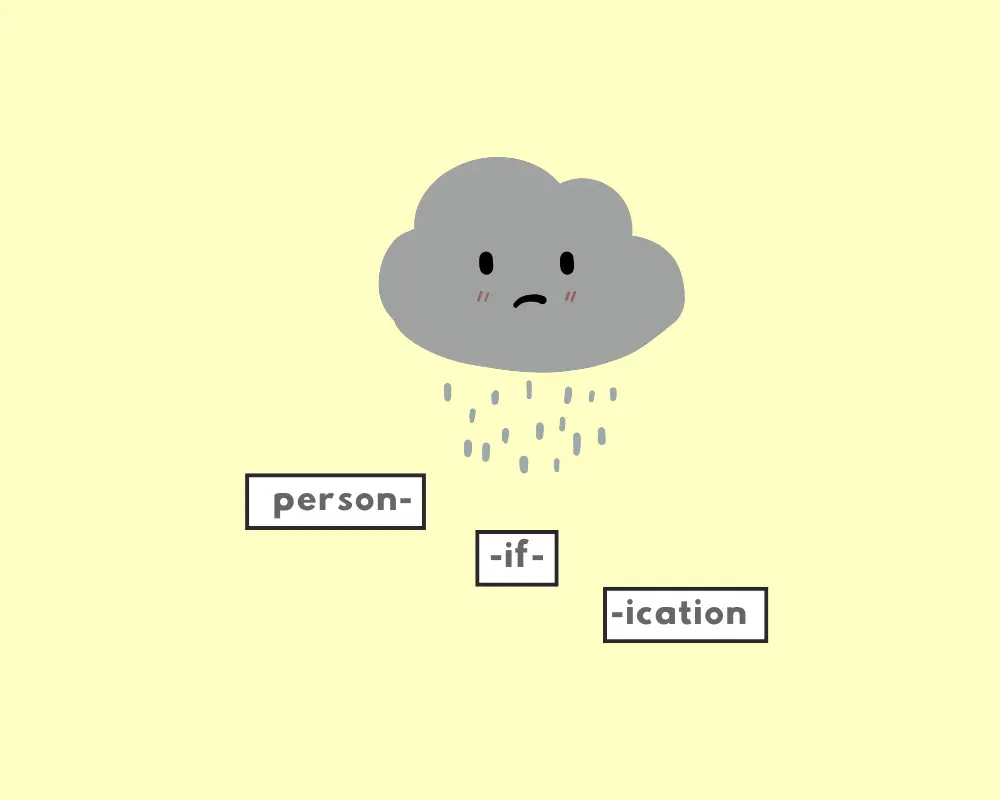What’s personification?
Personification is a literary technique that assigns human-like qualities, actions, or emotions to non-human organisms, objects, and even abstract concepts.
When we describe animals, physical objects, or intangible concepts as though they possess human emotions or traits—like “that's an angry storm,” or “opportunity came knocking on my door”—we personify non-human things.
As a literary technique, personification brings life and animation to the world around us, and adds depth and fluidity to poetry and creative writing.
Examples of Personification
| Example Sentences |
|---|
|
Personification vs. Anthropomorphism
Both involve giving human traits to nonhuman things, but they are notably distinct. Personification is usually a brief, metaphorical description, while anthropomorphism is more literal and sustained, creating characters that truly behave like humans.
Personification in Poetry
Hope is the Thing with Feathers by Emily Dickinson
The abstract concept, hope, is depicted as if it were a bird that “perches in the soul”—
“Hope” is the thing with feathers -
That perches in the soul -
And sings the tune without the words -
And never stops - at all -
Practice: Identify Personification
The wind whispered through the trees.
The thunder was loud last night.
Opportunity knocked on my door.
The leaves are green in spring.
FAQs
What's the main purpose of personification?
Is "the dog smiled" an example of personification?
How is personification different from a metaphor?
Sources
-
"Personification." Merriam-Webster.com Dictionary, Merriam-Webster, https://www.merriam-webster.com/dictionary/personification. Accessed 15 Sep. 2025.
-
Nordquist, Richard. "Personification in Figurative Language." ThoughtCo, Aug. 26, 2020, thoughtco.com/personification-figurative-language-1691595.
Advertisement








.webp&w=3840&q=75)